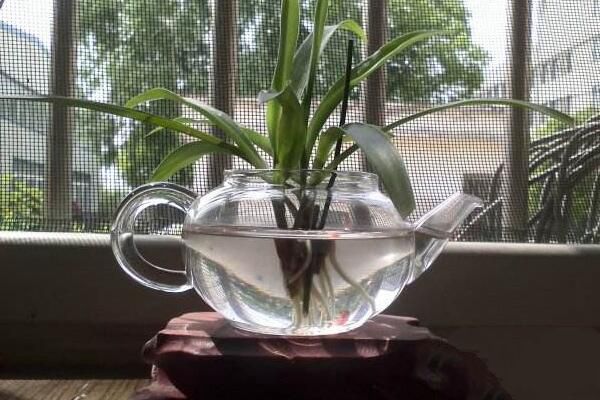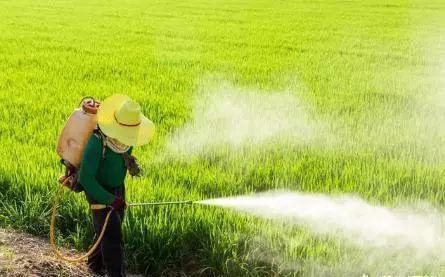mesophyte Learn more about mesophyte
-
What are the functions of mesophytic bacteriocin?

What are the functions of mesophytic bacteriocin? How to use Zhongshengmycin? We also ask experienced netizens to introduce that there are 3% wettable powder and 1% water agent in the agricultural antibiotic products in the agricultural material market. when going to the countryside, some farmers do not understand the function and use of the fungus, so the farming network has been sorted out.
2018-07-11 -
Fine varieties of tea

Breeding and popularizing fine tea varieties is a fundamental measure to improve the quality and yield of tea and increase the economic benefits of growing tea. From a large number of production practice and scientific research results, it is proved that the selection of excellent tea varieties plays a role in tea production in many aspects: first, it can increase the yield. Tea yield is determined by comprehensive factors such as the number and weight of buds and leaves per unit area, the growth rate of buds and leaves in the annual growth period, the length of vegetative growth period and so on. Under the same conditions, different varieties have different yield factors, so the yield is different.
2019-01-16 -
Tea variety: Yuemingxiang

Crop species: tea Variety name: Yuemingxiang breeding Unit: tea Research Institute of Fujian Academy of Agricultural Sciences Variety Source: single plant selected from red leaf Guanyin population: characteristics approved by Fujian crop Variety approval Committee in 1994: shrub type, middle leaves, mesophytic species. The plant is of medium size, the tree posture is half-open, the branches are still dense, and the leaves are planted horizontally. The leaves are obovoid, dark green, flat, blunt, thick and soft. four
2019-01-16 -
Tea variety: Qianmei 809

Crop species: tea Variety name: Qianmei 809 breeding Unit: Guizhou Provincial Tea Science Research Institute Variety Source: Fuding Dabai Tea × Qianmei 412 Provincial examination and approval: characteristics approved by Guizhou crop Variety approval Committee in 1999: small tree type, big leaf type, mesophytic species. There is an obvious main rod, the branches are half-open, and the leaves are slightly obliquely inserted. The average length of the leaf is 14.2 cm, the width is 6.7 cm, the leaf vein is 911 pairs, the leaf surface is raised, the leaf tip is convex.
2019-01-16 -
Nanjiang No.2 (Tea Tree)

Variety approval No.: national examination Tea 2002011 crop species: tea Variety name: Nanjiang No. 2 breeding Unit: Chongqing Tea Research Institute Variety Source: selected from a single plant in Nanjiang large leaf species. Provincial examination and approval: the characteristics approved by the crop Variety approval Committee of Sichuan Province in 1995: belong to shrub type, middle leaf type, mesophytic early species. The tree is half-open and the leaves are obliquely planted. The leaves are oval, slightly raised, green, 8.4 cm long and 3.2% wide.
2019-01-16 -
Tea Variety: Nanjiang 2

Crop species: tea Variety name: Nanjiang No. 2 breeding Unit: Chongqing Tea Research Institute Variety Source: selected from a single plant among Nanjiang large leaf species, the provincial examination and approval situation: the characteristics approved by the crop Variety approval Committee of Sichuan Province in 1995: belong to shrub type, middle leaves, mesophytic early species. The tree is half-open and the leaves are obliquely planted. The leaf is oval, the leaf surface is slightly raised, the leaf color is green, the leaf is 8.4 cm long and 3.2 cm wide, the vein is 9 pairs, the leaf tip is round. The bud leaves are yellowish green, with more hairs, one bud with three leaves and a hundred buds.
2019-01-16 -
Mushroom Liao Baihao

Clones. Small trees, medium-leaf, mesophytic species. Diploid. Origin and Distribution: Originally produced in Xianggu Village, Pengxi Town, Taishun County, Zhejiang Province, it is selected by tea farmers. It is mainly distributed in southern Zhejiang tea area. Other tea areas in Zhejiang have introduced varieties. Characteristics: tall plants, tree posture upright, sparse branches, leaves horizontal or pendulous shape. Long elliptic leaves, green leaves, shiny, leaf surface uplift, leaf body flat, green undulate, leaf tip gradually pointed, leaf teeth density medium, thick leaves. Bud leaves are light green, especially hairy, one bud, three leaves, 100 buds weight 40.0g
2019-01-16 -
Qianmei 809 (Tea Tree)

Variety approval No.: national examination Tea 2002007 crop species: tea Variety name: Qianmei 2002007 breeding Unit: Guizhou Provincial Tea Science Research Institute Variety Source: Fuding Dabai Tea × Qianmei 412 Provincial approval: characteristics approved by Guizhou crop Variety approval Committee in 1999: small tree type, big leaf type, mesophytic species. There is an obvious main rod, the branches are half-open, and the leaves are slightly obliquely inserted. Leaf flat average length is 14.2 cm, width is 6.7 cm, leaf vein
2019-01-16 -
Tea variety: Wannong 111

Variety approval No.: national examination Tea 2002009 crop species: tea Variety name: Wannong 2002009 selection and breeding Unit: Anhui Agricultural University Variety Source: Yunnan Daye Tea Seeds were bred by CO60 irradiation at the provincial level: in 1996, the crop Variety approval Committee of Anhui Province approved the characteristics: it belongs to small tree type, big leaf type, mesophytic species. The tree is half-open and the leaves are growing horizontally. The leaf shape is oval, dark green, the leaf surface is raised, the leaf tip is sharp, the leaf length is average.
2019-01-16 -
Tea variety: Huang Qi

Crop species: tea Variety name: Huang Qi breeding Unit: tea Research Institute of Fujian Academy of Agricultural Sciences Variety Source: Golden Cinnamomum × White Cymbidium (Natural Hybridization) Provincial examination and approval: characteristics approved by Fujian crop Variety approval Committee in 1994: small tree type, middle leaves, mesophytic early species. The crown is tall, the tree posture is half-open, and the branching ability is medium. The leaf is oval, the leaf color is green, the leaf surface is slightly raised, the leaf tip is acuminate, the leaf is thick and crisp. The bud leaves have strong fertility and dense germination, and the mining period is in the middle and last ten days of April. Bud leaf yellow
2019-01-16 -
Wannong 111 (Tea Tree)

Variety approval No.: national examination Tea 2002009 crop species: tea Variety name: Wannong 2002009 selection and breeding Unit: Anhui Agricultural University Variety Source: Yunnan Daye Tea Seeds were bred by CO60 irradiation at the provincial level: in 1996, the crop Variety approval Committee of Anhui Province approved the characteristics: it belongs to small tree type, big leaf type, mesophytic species. The tree is half-open and the leaves are growing horizontally. Oval leaf shape, dark green, raised leaf surface, sharp tip, leaf
2019-01-16 -
Tea variety: Echa No.1

Crop species: tea Variety name: Echa No.1 breeding Unit: Hubei Academy of Agricultural Sciences Fruit Tea sericulture Research Institute Variety Source: Meizhan × Fuding Dabai Tea Provincial examination and approval: characteristics approved by Hubei crop Variety approval Committee in 1993: shrub type, middle leaves, mesophytic species. The tree posture is half-open, the backbone branches are stout, the branching force is strong, and the growth momentum is prosperous. The leaf is dark green, the leaf shape is long oval, the leaf surface is glossy, slightly inflexed, the leaf tip is acuminate, the leaf quality is soft. The bud leaves are yellowish green and medium hairy.
2019-01-16 -
Which is the mixture of Zhongshengmycin and?

Except that it can not be mixed with alkaline pesticides such as turpentine mixture, stone sulfur mixture, Bordeaux liquid, etc., it can basically be mixed with other pesticides. Zhongshengmycin is an agricultural antibiotic successfully developed by the Institute of Biological Control, Chinese Academy of Agricultural Sciences.
2020-11-09 Mesophyte bacteriocin and which mixed mesophyte nisin except no -
Echa No.1 (Tea Tree)

Variety approval No.: national examination Tea 2002013 crop species: tea Variety name: Echa No.1 breeding Unit: Hubei Academy of Agricultural Sciences Fruit Tea sericulture Research Institute Variety Source: Meizhan × Fuding Dabai Tea Provincial examination and approval: 1993 Hubei crop Variety approval Committee approved characteristics: shrub type, middle leaves, mesophytic species. The tree posture is half-open, the backbone branches are stout, the branching force is strong, and the growth momentum is prosperous. The leaf is dark green, long oval in shape, glossy, slightly inflexed, acuminate and soft.
2019-01-16 -
Explanation on the main points of temperature and Light of hydroponic Flowers

Explanation on the main points of temperature and Light of hydroponic Flowers
2019-11-01 -
Huang Qi (Tea Tree)

Variety approval No.: national examination Tea 2002018 crop species: tea Variety name: Huangqi breeding Unit: tea Research Institute of Fujian Academy of Agricultural Sciences Variety Source: Golden Cinnamomum × Baiqilan (Natural Hybridization) Provincial examination and approval: characteristics approved by Fujian crop Variety approval Committee in 1994: small tree type, middle leaf type, mesophytic early species. The crown is tall, the tree posture is half-open, and the branching ability is medium. The leaf is oval, the leaf color is green, the leaf surface is slightly raised, the leaf tip is acuminate, the leaf is thick and crisp. Bud leaf growth
2019-01-16 -
How to plant Platycodon grandiflorum seeds

Platycodon grandiflorum is a common flower in life, which has high ornamental value. Many people like to plant some at home. How to plant Platycodon grandiflorum seeds? 1. There are many varieties of Platycodon grandiflorum, which can be divided into early, middle and late varieties.
2020-11-09 Ocean Platycodon grandiflorum seed how plant ocean yes life medium -
Pesticides should be used differently according to different fungi and pathogens of crop diseases.

First of all, after the crop is infected by fungi, there will be different shapes of disease spots, and the disease spots will produce different colors of mildew or powder, no peculiar smell. After being injured by bacteria, the disease spot on the leaf has no mildew or powder.
2018-08-17 -
How to grasp the best time of flower irrigation and the fertilization techniques of edible fungi

How to grasp the best time for flower irrigation
2019-06-03 -
Management techniques of Orchid in Winter

Management techniques of Orchid in Winter
2019-08-02
